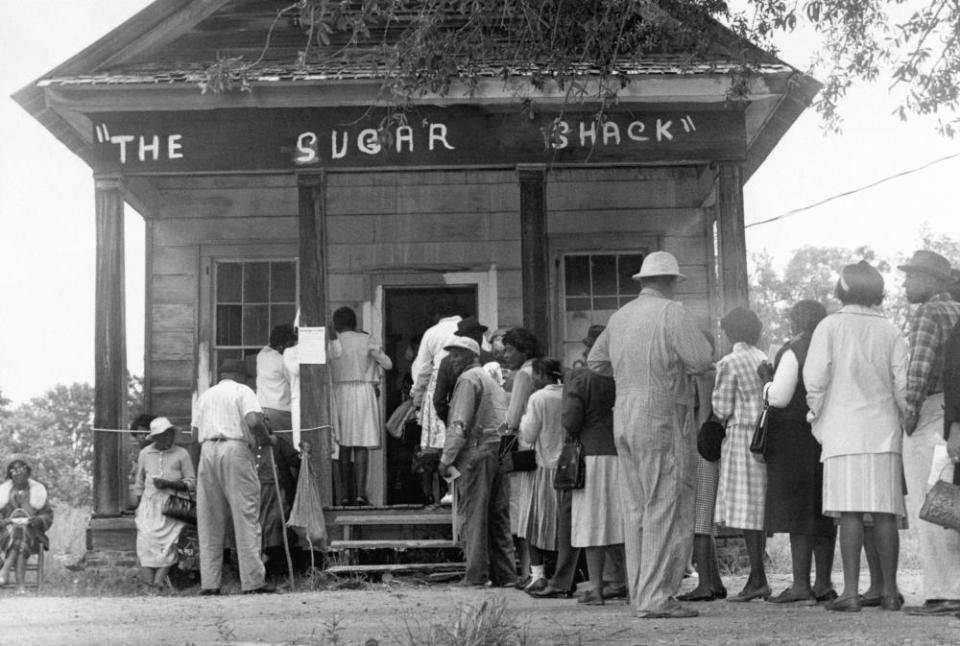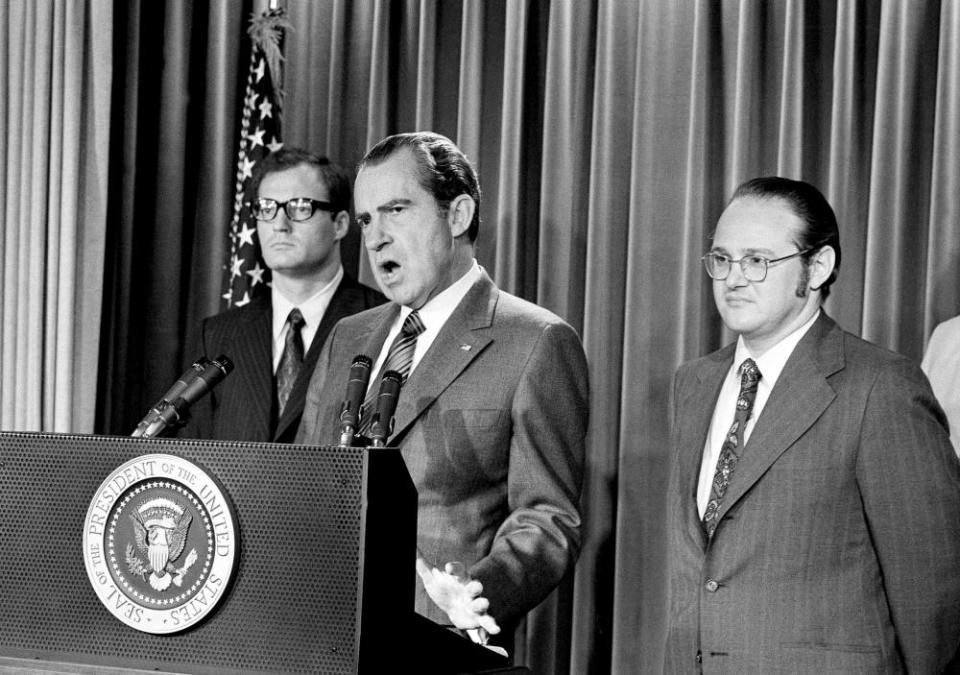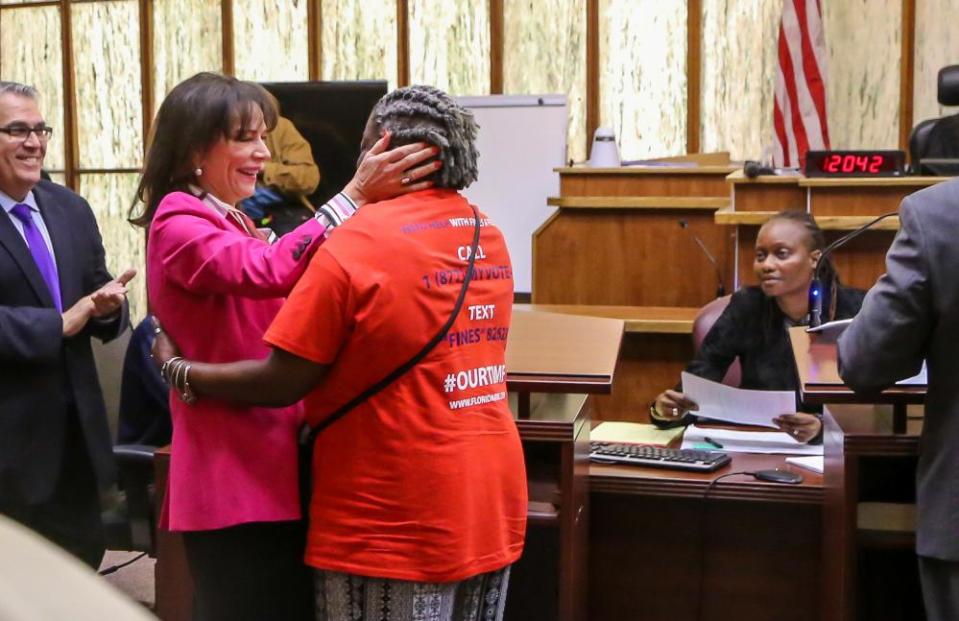Civil death: how millions of Americans lost their right to vote
Civil death is a form of punishment that extinguishes someone’s civil rights. It’s a concept that has been reshaped and reinterpreted over many generations, persisting in the form of felony disenfranchisement, through which a citizen loses their right to vote due to a felony conviction.
There are an estimated 6 million Americans who cannot vote in the country’s elections because of some form of civil death. Depending on the state they live in, they might even lose their right to vote permanently, or for years after they are released from prison. While the US has come to see this form of civil death as status quo, it is actually rare for a democratic country to take away a citizen’s voting rights after they leave prison, let alone forever. Countries like Germany and Denmark allow prisoners to vote while incarcerated, while others restore their rights immediately after release.
The US’s history of restricting the number of people who can vote in elections goes back to the colonies – and it’s a history that has disproportionately affected black people. Here is the story of how civil death in the US came to be.
1100 BC-AD 1500
The roots of criminal disenfranchisement in the United States lie in ancient Athens, Rome and medieval Europe. Disenfranchisement, in these societies, was typically applied to individuals for particularly grave or election-related crimes, and resulted in civil death.
1607-1776
The principle of civil death was adopted into Anglo-Saxon law, and was then carried over to British colonies. The laws required people with some criminal offenses to forfeit property, inheritance and civil rights. Some of this was grounded in English philosopher John Locke’s theory of the social contract, which some would later interpret as a justification for felon disenfranchisement.
1776-1821
Following the Revolutionary war and independence, the colonies wrote constitutions and became states. Eleven of these state constitutions established forms of criminal disenfranchisement, citing “purity of the ballot box” and claiming that convicted criminals could commit election fraud, or otherwise sully the democratic process. By 1790, 10 of the original 13 states held that voting was restricted to property owners who, at the time, were wealthy white men.
1821-65
The prior justifications for restricting the vote to elite white men eventually lost influence due to social pressures such as inter-party competition for votes, war and the growth of masses who did not own property. States slowly abolished property ownership and taxpaying requirements for suffrage. But even while they extended voting rights to more white men, lawmakers cracked down on those with criminal convictions and a wave of criminal disenfranchisement followed, probably to restrict lower-income voters. Sixteen states adopted disenfranchisement measures between 1840 and 1865.
1865-80
In the period following the civil war, at least 13 of the United States’ then 38 states enacted broad criminal disenfranchisement laws in rapid succession.
After the civil war the 1867 election marked the starting point of southern states tailoring criminal disenfranchisement laws to block black voters. Several southern states expanded their definitions of felony to incorporate property offenses previously defined as misdemeanors. The Mississippi “Pig Law” of 1876, for example, broadened the definition of grand larceny from a theft of anything valued at more than $25 to a value of $10.
Soon, with the rise of the Jim Crow era, black Americans’ right to vote would be systematically denied through the use of poll taxes, grandfather clauses, property tests, intimidation and literacy tests.
1880-1900
Civil death didn’t only affect black Americans. Restrictions targeting immigrants, the poor and the urban working class began to appear in the late 19th century, and almost all states which previously granted voting rights to immigrants repealed those provisions.
Meanwhile, court cases continued to uphold this punishment. The Mississippi constitution prohibited persons convicted of particular petty offenses from voting. Those convicted and disenfranchised were almost exclusively black, while crimes committed by whites, including rape and murder, did not result in disenfranchisement. The Mississippi supreme court defended this provision by asserting that race influences the type of offense to which one is prone.
Southern politicians were open about their attempts to disenfranchise minority voters. In 1897, Rebecca Latimer Felton of Georgia, the first woman to hold a Senate seat, told her supporters that rapes of white women “will grow and increase with every election where white men equalized themselves at the polls with an inferior race”.
1901
In 1901, Alabama’s new constitution disenfranchised anyone committing a crime involving “moral turpitude”, an argument often made for civil death on the basis of heinous crimes, and the president of the convention declared this an effort to “establish white supremacy in this state”. Moral turpitude continues to be a factor in determining voting eligibility in certain US states today.
1916
Before the 1916 election in St Louis, Democratic party leaders dispatched about 20 attorneys to comb criminal court records and ultimately disenfranchise 3,000 black residents who had been convicted of a crime. This made up 25% of St Louis’s registered black voters. At the polls, Democratic operatives aimed to intimidate black voters, threatening criminal penalties for ex-offenders who voted.

1957-65
Three pieces of major legislation would later affect how felony disenfranchisement has been challenged. The Civil Rights Act authorized the US attorney general and justice department to sue to correct discrimination and intimidation of potential voters, especially black citizens. The 24th amendment was ratified, eliminating poll taxes, which constitute financial restriction to voting. And, after years of protest and organizing by black leaders, President Lyndon Johnson signed the Voting Rights Act, which intended to enfranchise black voters by outlawing discriminatory tactics such as literacy tests.
1971
But civil rights legislation didn’t protect minority voters from the new era of mass incarceration. President Richard Nixon addressed Congress, calling for national anti-drug policy at the state and federal level, calling drug abuse a “serious national threat”.
This marked the beginning of the “war on drugs”, which would lead to a surge in arrests and incarceration of black Americans and other minorities due to often minor offenses. Over the next decades, millions lost their voting rights because of drug-related felony charges.

1974
The war on drugs era made it difficult for civil rights groups to fight disenfranchisement. One supreme court case, Richardson v Ramirez upheld criminal disenfranchisement in California, ruling that that states are granted an “affirmative sanction” to disenfranchise those convicted of crimes. At this time, the state and federal prison population was around 200,000.
1980-1985
Though felony disenfranchisement disproportionately burdened people of color, the criminality aspect of civil death made it difficult for these laws to be ruled discriminatory under the Voting Rights Act. One case, Hunter v Underwood, however, did stand out. The supreme court ruled that while states have the right to disenfranchise criminals, the 14th amendment did not protect provisions reflecting “purposeful racial discrimination”. The decision said Alabama’s law disenfranchising those with misdemeanors on the grounds of “moral turpitude” was a violation of the law.
1986-1995
President Reagan signed the Anti-Drug Abuse Act of 1986, appropriating $1.7bn to building new prisons, drug education and treatment. The bill created mandatory minimum penalties for drug offenses. The relationship between mass incarceration and civil death was further cemented and would continue through the 1990s, when policing communities of color for petty crimes meant taking away their voting rights.
2016
The state and federal prison population reached 1.4 million, and an estimated 6.1 million people were disenfranchised due to a current or previous felony conviction. Currently, about a fifth (450,000) of the people incarcerated in the US prison system are serving time related to drug charges, and the majority are people of color.
2018
Florida passed amendment 4, restoring the right to vote to up to 1.4 million ex-felons. The ballot initiative would be one of the most significant voting rights victories for this population in decades.

But months after this ballot initiative was approved, Republican legislators passed a new law requiring ex-felons to pay court fines and fees in order to regain the right to vote. Critics of the law have called this payment requirement a modern-day poll tax. In July of 2020 the supreme court ruled in favor of the legislature, making it difficult for hundreds of thousands of Floridians to vote in the upcoming election.
2019
Nevada restored the vote to about 77,000 ex-felons.
2020
Washington DC is poised to enact a new measure allowing people in prison to vote. The district would join Maine and Vermont, the only two US states that do not disenfranchise people with felony convictions while they are in prison. If enacted, the DC measure will allow 4,500 people to vote in December.
***
US history shows us that voting wasn’t simply withheld from black people during slavery and then granted after abolition.
In 1790, anyone who was not a property owner was barred from voting. With the passage of the 15th amendment in 1870, voting became formally accessible for black men, but remained exclusionary to all black people. Poll taxes, literacy tests, voter intimidation, mandatory minimum sentences and racialized policing have sustained voter suppression and civil death among black, poor Americans.
Disenfranchisement clearly has a deeper significance to the democratic system’s formation – that crimes should result in civil death, particularly for society’s most oppressed populations.

